Melinda Gervasio
ToMCAT: Theory-of-Mind for Cooperative Agents in Teams via Multiagent Diffusion Policies
Feb 25, 2025Abstract:In this paper we present ToMCAT (Theory-of-Mind for Cooperative Agents in Teams), a new framework for generating ToM-conditioned trajectories. It combines a meta-learning mechanism, that performs ToM reasoning over teammates' underlying goals and future behavior, with a multiagent denoising-diffusion model, that generates plans for an agent and its teammates conditioned on both the agent's goals and its teammates' characteristics, as computed via ToM. We implemented an online planning system that dynamically samples new trajectories (replans) from the diffusion model whenever it detects a divergence between a previously generated plan and the current state of the world. We conducted several experiments using ToMCAT in a simulated cooking domain. Our results highlight the importance of the dynamic replanning mechanism in reducing the usage of resources without sacrificing team performance. We also show that recent observations about the world and teammates' behavior collected by an agent over the course of an episode combined with ToM inferences are crucial to generate team-aware plans for dynamic adaptation to teammates, especially when no prior information is provided about them.
Confidence Calibration for Systems with Cascaded Predictive Modules
Sep 21, 2023
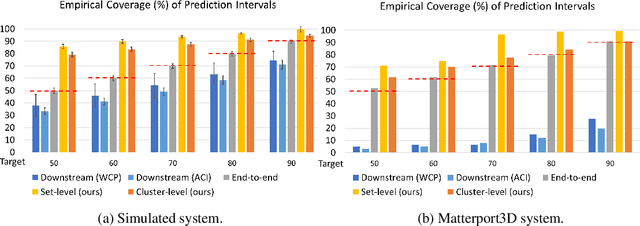


Abstract:Existing conformal prediction algorithms estimate prediction intervals at target confidence levels to characterize the performance of a regression model on new test samples. However, considering an autonomous system consisting of multiple modules, prediction intervals constructed for individual modules fall short of accommodating uncertainty propagation over different modules and thus cannot provide reliable predictions on system behavior. We address this limitation and present novel solutions based on conformal prediction to provide prediction intervals calibrated for a predictive system consisting of cascaded modules (e.g., an upstream feature extraction module and a downstream regression module). Our key idea is to leverage module-level validation data to characterize the system-level error distribution without direct access to end-to-end validation data. We provide theoretical justification and empirical experimental results to demonstrate the effectiveness of proposed solutions. In comparison to prediction intervals calibrated for individual modules, our solutions generate improved intervals with more accurate performance guarantees for system predictions, which are demonstrated on both synthetic systems and real-world systems performing overlap prediction for indoor navigation using the Matterport3D dataset.
IxDRL: A Novel Explainable Deep Reinforcement Learning Toolkit based on Analyses of Interestingness
Jul 18, 2023
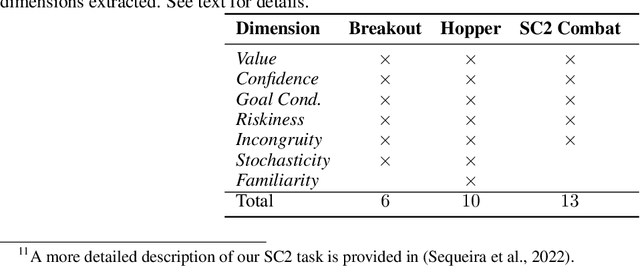
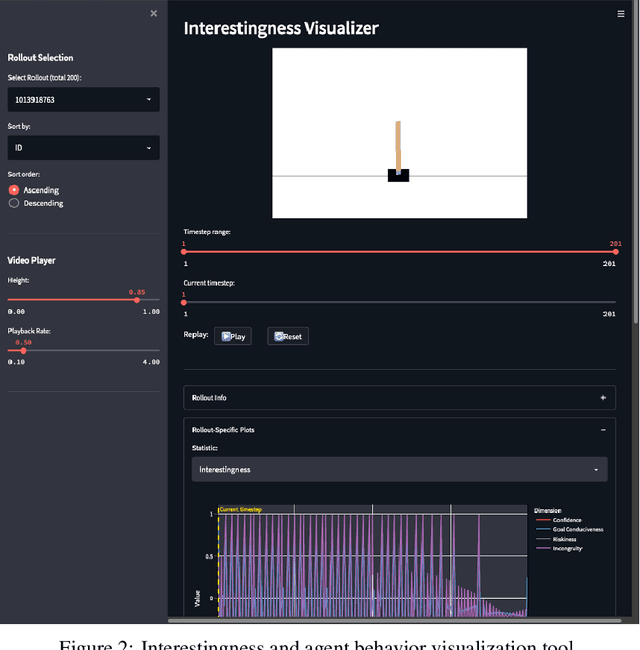

Abstract:In recent years, advances in deep learning have resulted in a plethora of successes in the use of reinforcement learning (RL) to solve complex sequential decision tasks with high-dimensional inputs. However, existing systems lack the necessary mechanisms to provide humans with a holistic view of their competence, presenting an impediment to their adoption, particularly in critical applications where the decisions an agent makes can have significant consequences. Yet, existing RL-based systems are essentially competency-unaware in that they lack the necessary interpretation mechanisms to allow human operators to have an insightful, holistic view of their competency. Towards more explainable Deep RL (xDRL), we propose a new framework based on analyses of interestingness. Our tool provides various measures of RL agent competence stemming from interestingness analysis and is applicable to a wide range of RL algorithms, natively supporting the popular RLLib toolkit. We showcase the use of our framework by applying the proposed pipeline in a set of scenarios of varying complexity. We empirically assess the capability of the approach in identifying agent behavior patterns and competency-controlling conditions, and the task elements mostly responsible for an agent's competence, based on global and local analyses of interestingness. Overall, we show that our framework can provide agent designers with insights about RL agent competence, both their capabilities and limitations, enabling more informed decisions about interventions, additional training, and other interactions in collaborative human-machine settings.
Global and Local Analysis of Interestingness for Competency-Aware Deep Reinforcement Learning
Nov 11, 2022



Abstract:In recent years, advances in deep learning have resulted in a plethora of successes in the use of reinforcement learning (RL) to solve complex sequential decision tasks with high-dimensional inputs. However, existing systems lack the necessary mechanisms to provide humans with a holistic view of their competence, presenting an impediment to their adoption, particularly in critical applications where the decisions an agent makes can have significant consequences. Yet, existing RL-based systems are essentially competency-unaware in that they lack the necessary interpretation mechanisms to allow human operators to have an insightful, holistic view of their competency. In this paper, we extend a recently-proposed framework for explainable RL that is based on analyses of "interestingness." Our new framework provides various measures of RL agent competence stemming from interestingness analysis and is applicable to a wide range of RL algorithms. We also propose novel mechanisms for assessing RL agents' competencies that: 1) identify agent behavior patterns and competency-controlling conditions by clustering agent behavior traces solely using interestingness data; and 2) identify the task elements mostly responsible for an agent's behavior, as measured through interestingness, by performing global and local analyses using SHAP values. Overall, our tools provide insights about RL agent competence, both their capabilities and limitations, enabling users to make more informed decisions about interventions, additional training, and other interactions in collaborative human-machine settings.
A Framework for Understanding and Visualizing Strategies of RL Agents
Aug 17, 2022
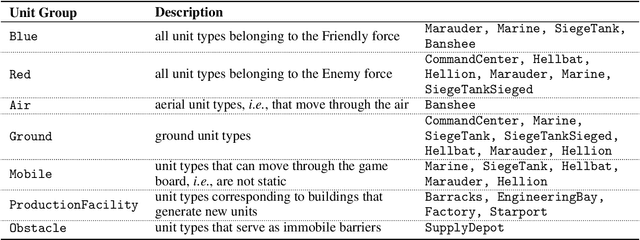
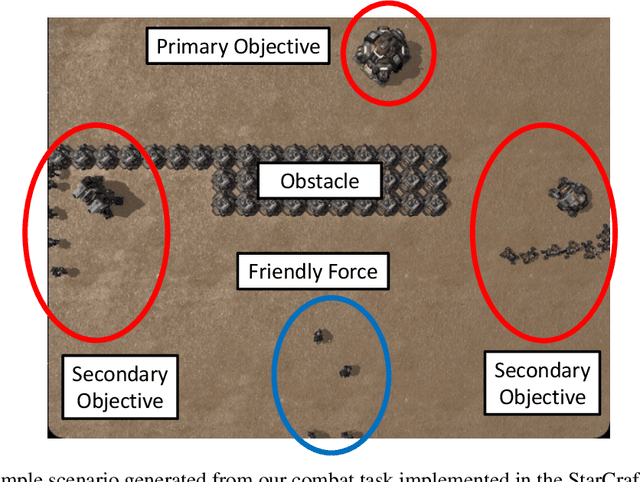
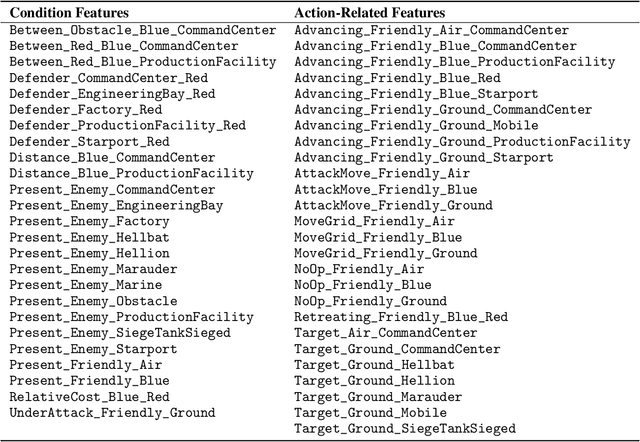
Abstract:Recent years have seen significant advances in explainable AI as the need to understand deep learning models has gained importance with the increased emphasis on trust and ethics in AI. Comprehensible models for sequential decision tasks are a particular challenge as they require understanding not only individual predictions but a series of predictions that interact with environmental dynamics. We present a framework for learning comprehensible models of sequential decision tasks in which agent strategies are characterized using temporal logic formulas. Given a set of agent traces, we first cluster the traces using a novel embedding method that captures frequent action patterns. We then search for logical formulas that explain the agent strategies in the different clusters. We evaluate our framework on combat scenarios in StarCraft II (SC2), using traces from a handcrafted expert policy and a trained reinforcement learning agent. We implemented a feature extractor for SC2 environments that extracts traces as sequences of high-level features describing both the state of the environment and the agent's local behavior from agent replays. We further designed a visualization tool depicting the movement of units in the environment that helps understand how different task conditions lead to distinct agent behavior patterns in each trace cluster. Experimental results show that our framework is capable of separating agent traces into distinct groups of behaviors for which our approach to strategy inference produces consistent, meaningful, and easily understood strategy descriptions.
Outcome-Guided Counterfactuals for Reinforcement Learning Agents from a Jointly Trained Generative Latent Space
Jul 15, 2022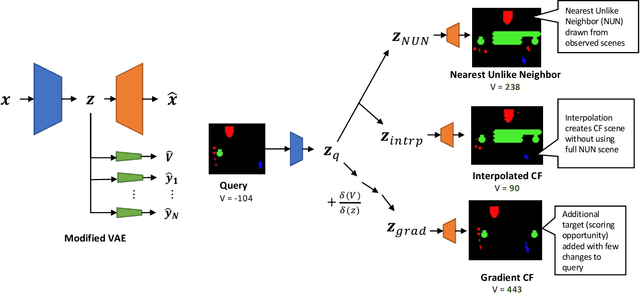
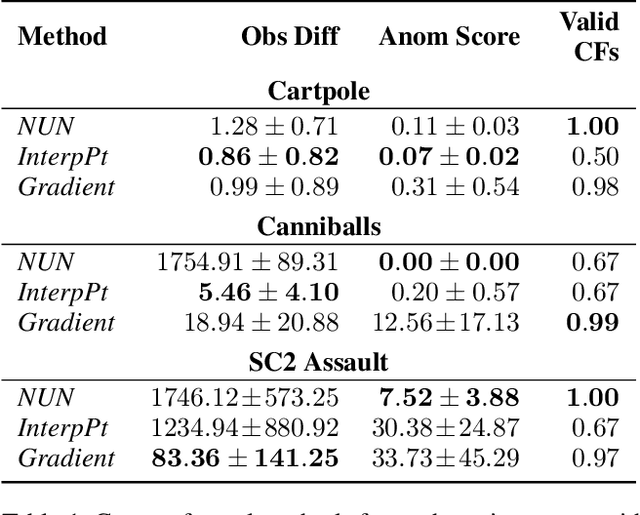


Abstract:We present a novel generative method for producing unseen and plausible counterfactual examples for reinforcement learning (RL) agents based upon outcome variables that characterize agent behavior. Our approach uses a variational autoencoder to train a latent space that jointly encodes information about the observations and outcome variables pertaining to an agent's behavior. Counterfactuals are generated using traversals in this latent space, via gradient-driven updates as well as latent interpolations against cases drawn from a pool of examples. These include updates to raise the likelihood of generated examples, which improves the plausibility of generated counterfactuals. From experiments in three RL environments, we show that these methods produce counterfactuals that are more plausible and proximal to their queries compared to purely outcome-driven or case-based baselines. Finally, we show that a latent jointly trained to reconstruct both the input observations and behavioral outcome variables produces higher-quality counterfactuals over latents trained solely to reconstruct the observation inputs.
Confidence Calibration for Domain Generalization under Covariate Shift
Apr 01, 2021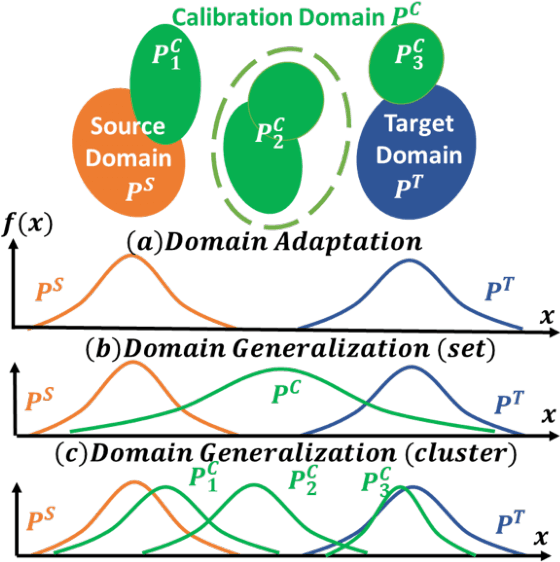

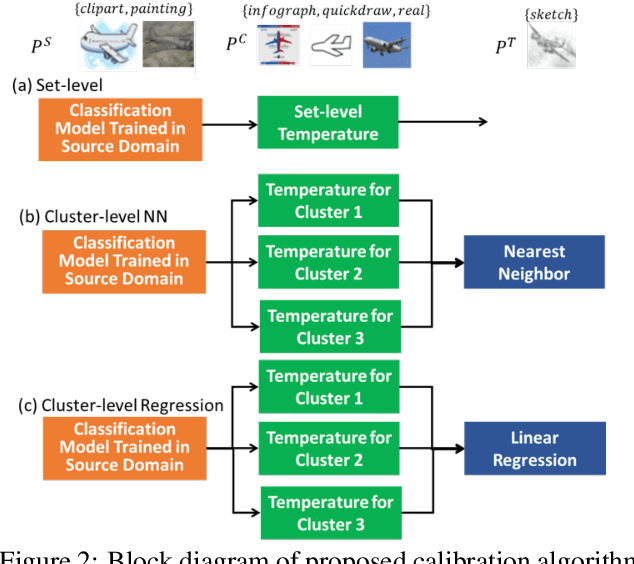
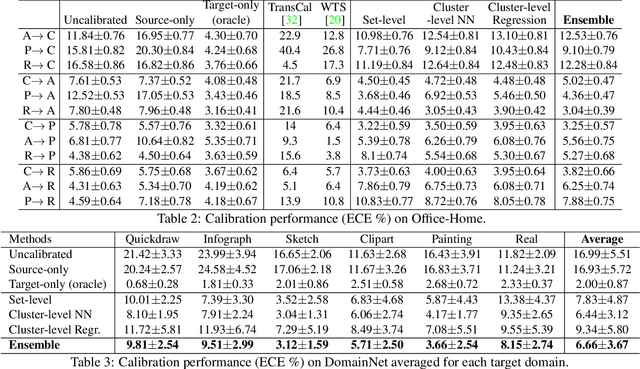
Abstract:Existing calibration algorithms address the problem of covariate shift via unsupervised domain adaptation. However, these methods suffer from the following limitations: 1) they require unlabeled data from the target domain, which may not be available at the stage of calibration in real-world applications and 2) their performances heavily depend on the disparity between the distributions of the source and target domains. To address these two limitations, we present novel calibration solutions via domain generalization which, to the best of our knowledge, are the first of their kind. Our core idea is to leverage multiple calibration domains to reduce the effective distribution disparity between the target and calibration domains for improved calibration transfer without needing any data from the target domain. We provide theoretical justification and empirical experimental results to demonstrate the effectiveness of our proposed algorithms. Compared against the state-of-the-art calibration methods designed for domain adaptation, we observe a decrease of 8.86 percentage points in expected calibration error, equivalently an increase of 35 percentage points in improvement ratio, for multi-class classification on the Office-Home dataset.
Interestingness Elements for Explainable Reinforcement Learning: Understanding Agents' Capabilities and Limitations
Dec 19, 2019
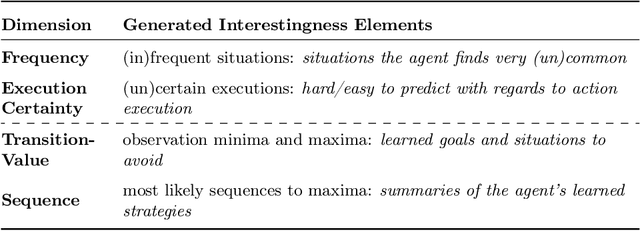
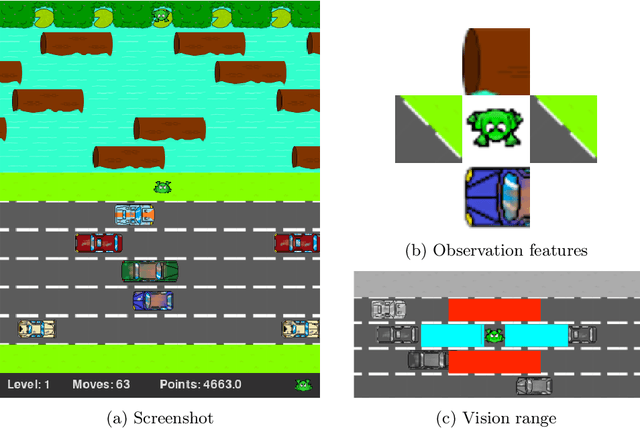

Abstract:We propose an explainable reinforcement learning (XRL) framework that analyzes an agent's history of interaction with the environment to extract interestingness elements that help explain its behavior. The framework relies on data readily available from standard RL algorithms, augmented with data that can easily be collected by the agent while learning. We describe how to create visual explanations of an agent's behavior in the form of short video-clips highlighting key interaction moments, based on the proposed elements. We also report on a user study where we evaluated the ability of humans in correctly perceiving the aptitude of agents with different characteristics, including their capabilities and limitations, given explanations automatically generated by our framework. The results show that the diversity of aspects captured by the different interestingness elements is crucial to help humans correctly identify the agents' aptitude in the task, and determine when they might need adjustments to improve their performance.
 Add to Chrome
Add to Chrome Add to Firefox
Add to Firefox Add to Edge
Add to Edge